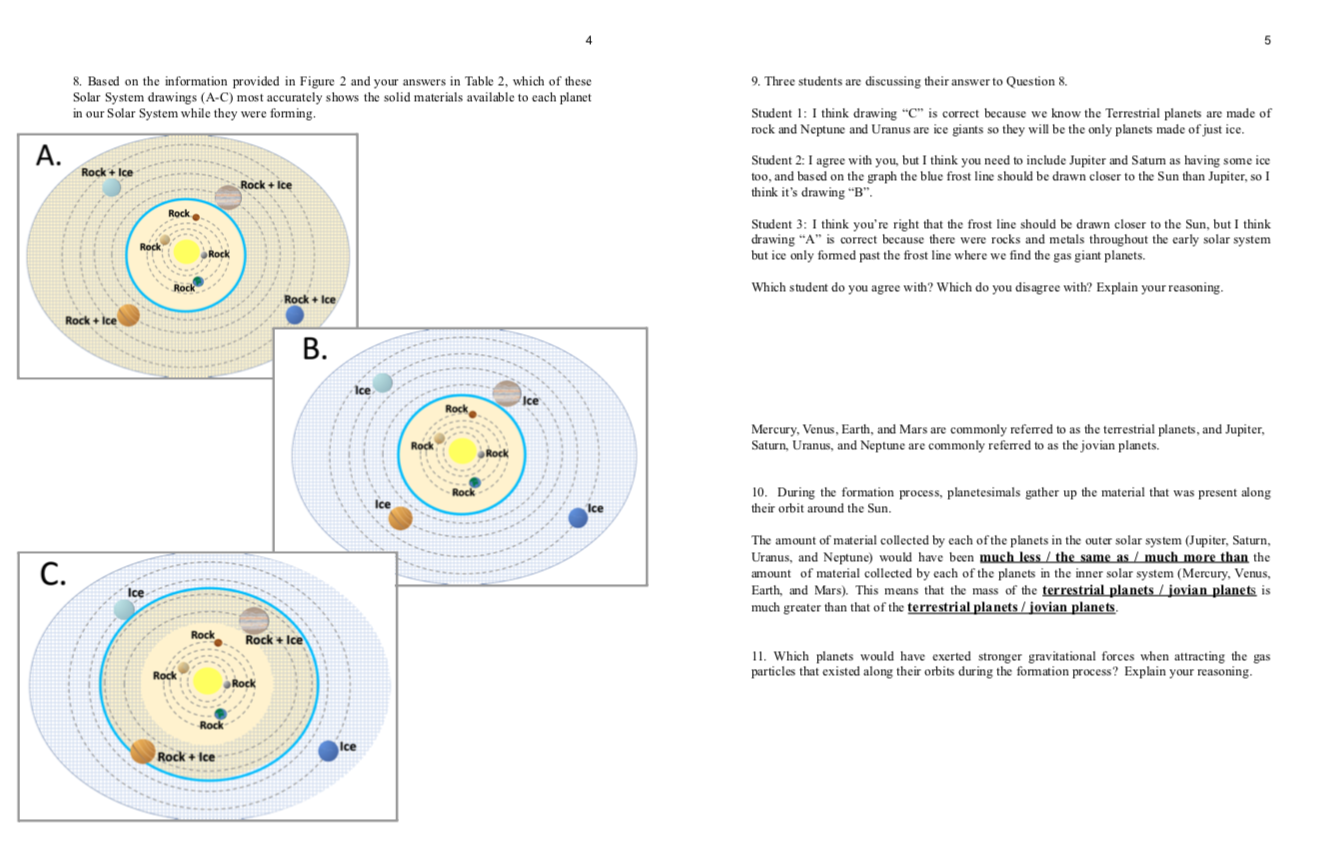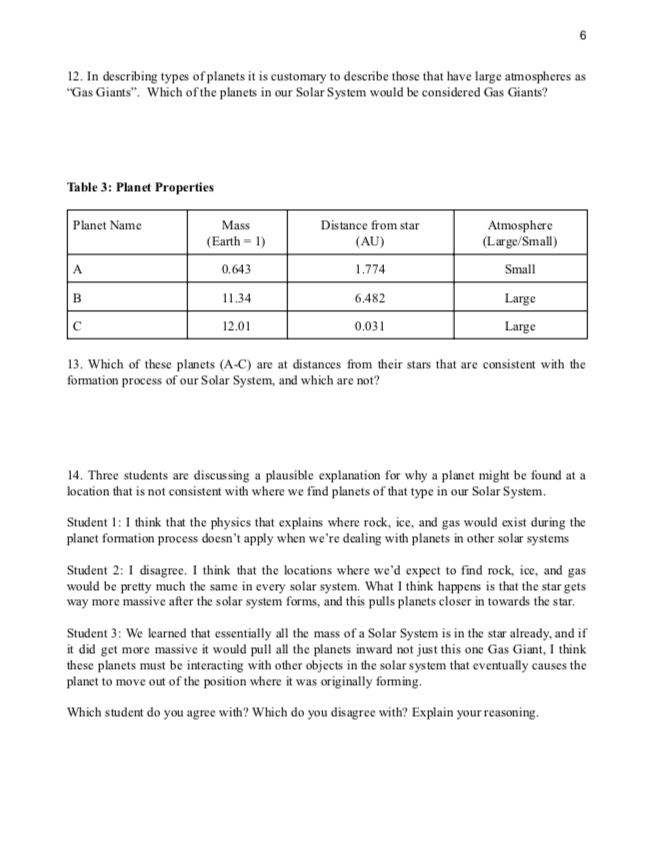

Transcribed image text: 5 9. Three students are discussing their answer to Question 8. 8. Based on the information provided in Figure 2 and your answers in Table 2, which of these Solar System drawings (A-C) most accurately shows the solid materials available to each planet in our Solar System while they were forming, Student 1: I think drawing "C" is correct because we know the Terrestrial planets are made of rock and Neptune and Uranus are ice giants so they will be the only planets made of justice. A. Rock + Ice Rockice Student 2: I agree with you, but I think you need to include Jupiter and Satum as having some ice too, and based on the graph the blue frost line should be drawn closer to the Sun than Jupiter, so I think it's drawing "B". Rock Rock Student 3: I think you're right that the frost line should be drawn closer to the Sun, but I think drawing "A" is correct because there were rocks and metals throughout the early solar system but ice only formed past the frost line where we find the gas giant planets. Which student do you agree with? Which do you disagree with? Explain your reasoning. Rock Rock Ice Rock + Ice B. Ice Ice Rock Mercury, Venus, Earth, and Mars are commonly referred to as the terrestrial planets, and Jupiter, Saturn, Uranus, and Neptune are commonly referred to as the jovian planets. Rock Rock Rock 10. During the formation process, planetesimals gather up the material that was present along their orbit around the Sun. Ice C. The amount of material collected by each of the planets in the outer solar system (Jupiter, Saturn, Uranus, and Neptune) would have been much less / the same as / much more than the amount of material collected by each of the planets in the inner solar system (Mercury, Venus, Earth, and Mars). This means that the mass of the terrestrial planets /jovian planets is much greater than that of the terrestrial planets / jovian planets Ice Rock Rock + Ice 11. Which planets would have exerted stronger gravitational forces when attracting the gas particles that existed along their orbits during the formation process? Explain your reasoning. Rock Rock Rock Ice Rock + Ice 12. In describing types of planets it is customary to describe those that have large atmospheres as "Gas Giants". Which of the planets in our Solar System would be considered Gas Giants? Table 3: Planet Properties Planet Name Mass (Earth = 1) Distance from star (AU) 1.774 A 0.643 Atmosphere (Large/Small) Small Large Large B 11.34 6.482 0.031 с 12.01 13. Which of these planets (A-C) are at distances from their stars that are consistent with the formation process of our Solar System, and which are not? 14. Three students are discussing a plausible explanation for why a planet might be found at a location that is not consistent with where we find planets of that type in our Solar System. Student 1: I think that the physics that explains where rock, ice, and gas would exist during the planet formation process doesn't apply when we're dealing with planets in other solar systems Student 2: I disagree. I think that the locations where we'd expect to find rock, ice, and gas would be pretty much the same in every solar system. What I think happens is that the star gets way more massive after the solar system forms, and this pulls planets closer in towards the star. Student 3: We learned that essentially all the mass of a Solar System is in the star already, and if it did get more massive it would pull all the planets inward not just this one Gas Giant, I think these planets must be interacting with other objects in the solar system that eventually causes the planet to move out of the position where it was originally forming. Which student do you agree with? Which do you disagree with? Explain your reasoning.
Expert's Answer
Chat with our Experts
Want to contact us directly? No Problem. We are always here for you

Your future, our responsibilty submit your task on time.
Order NowGet Online
Assignment Help Services





